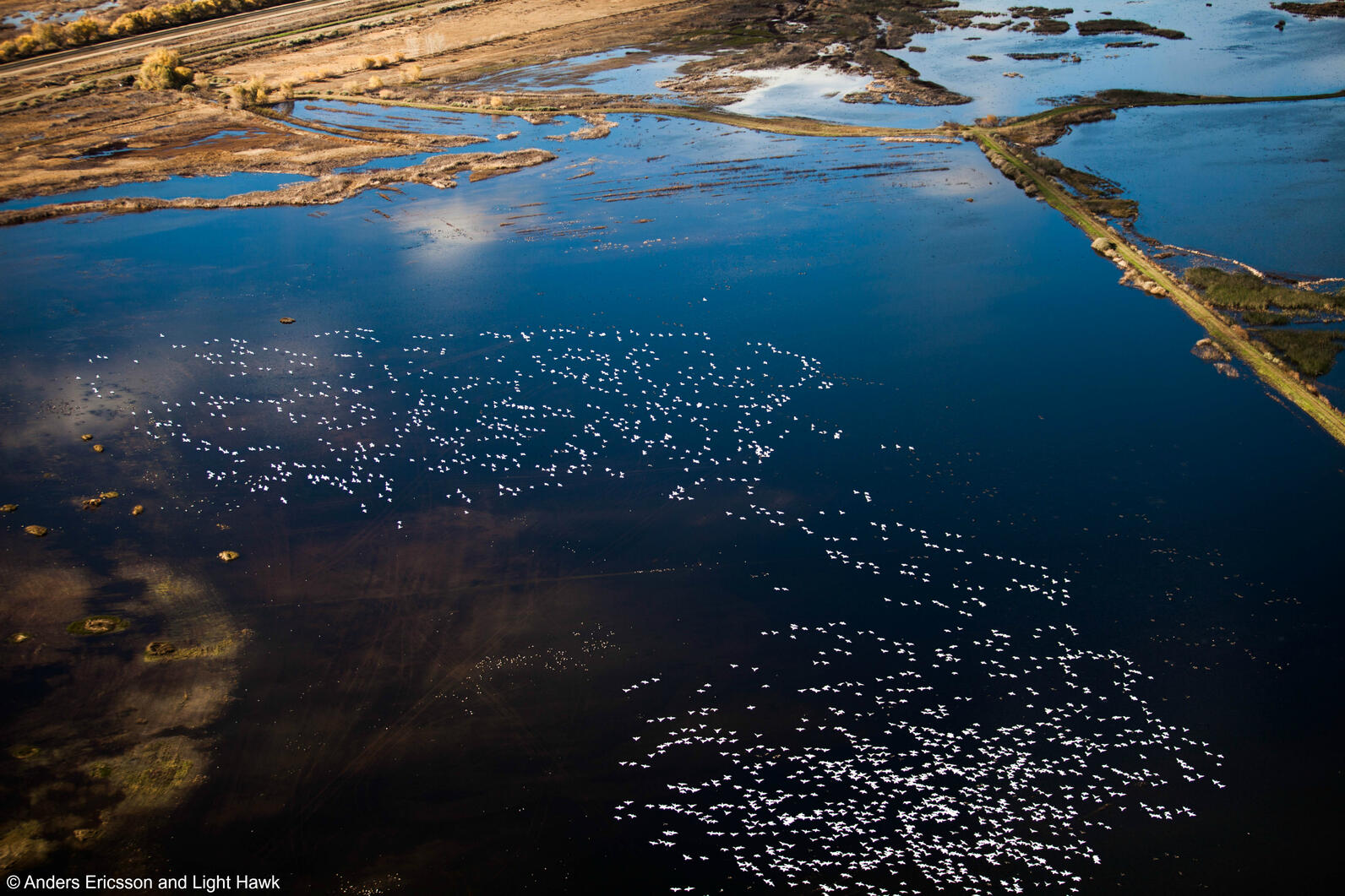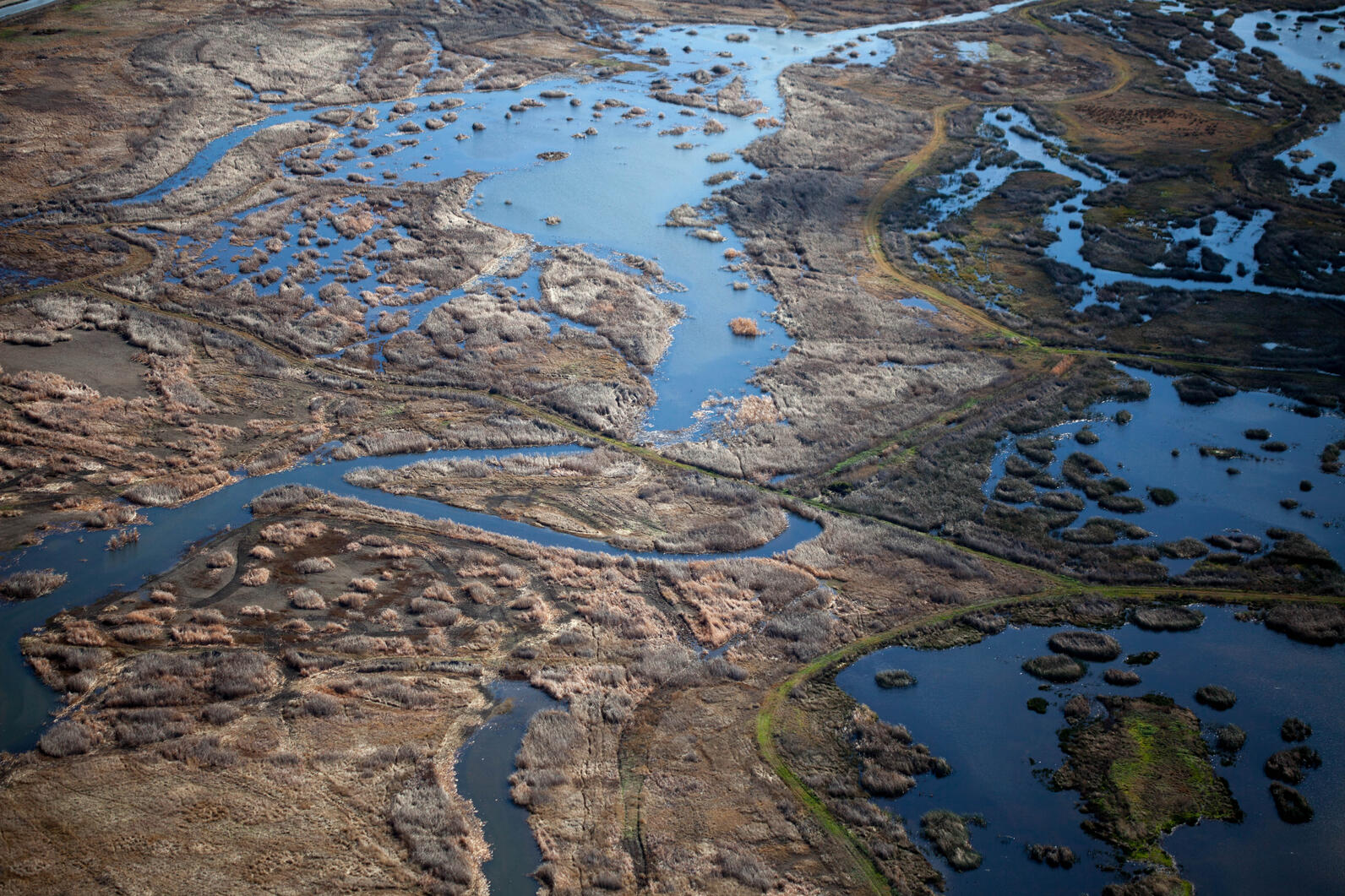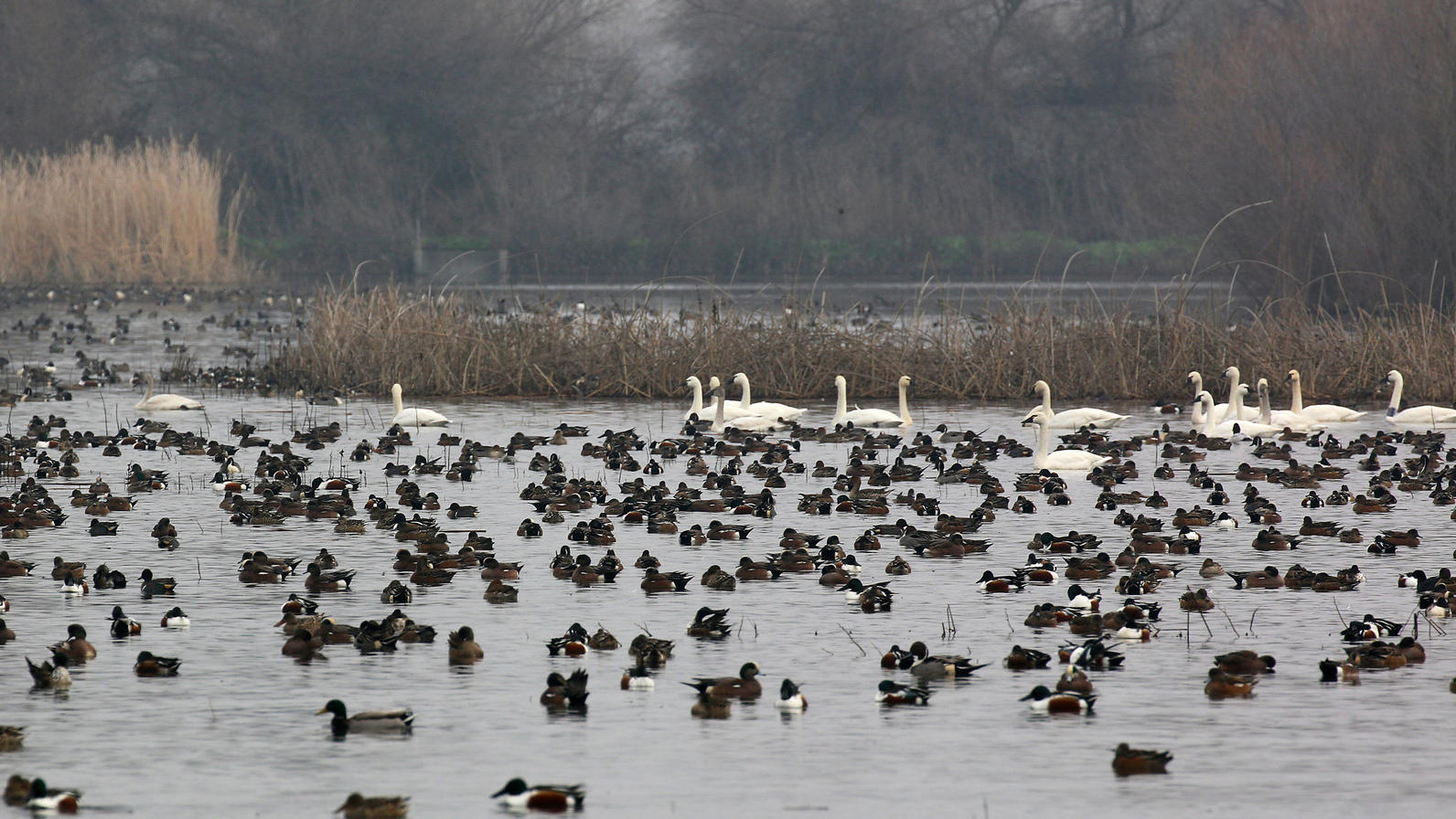Northern Pintail
Latin: Anas acuta
Water and wetlands are vital for the survival of California’s birds.
Wood Duck Photo: Harry Collins
Water is fundamental to our lives, our communities, and our economy. Water is also of vital importance to the survival of California’s birds and the habitats that support them. From our coastal estuaries to inland wetlands and waterbodies, water is the foundation of life.

That’s why Audubon California has been leading efforts to secure water when and where birds and people need it. This includes working on the policies and in the places where water matters most. We advocate for birds and drinking water for communities in five key ways:
Read more about the important work that Audubon California is doing to secure water for birds and for communities below.

Vital protections are needed for wetlands that depend on groundwater under the Sustainable Groundwater Management Act
Audubon California continues to advocate for adequate water supplies for Central Valley refuges.
Vibrant ecosystems can absorb carbon dioxide helping mitigate climate change and nitrogen cleaning the run-off from human use of the land for agriculture or development.
First-of-its-kind project restores 400 acres of tidal marsh habitat along Sonoma Creek in northern San Francisco Bay, helping withstand sea level rise and storm surges from climate change.
Audubon California is nearing the end of a massive restoration of wetland habitat in San Francisco Bay.
California is first in nation to commit to protecting 30% of our lands and waters by 2030.
Audubon California is helping secure the future of one of the state's key bird habitats.
Coalition of conservation and community groups says groundbreaking is positive step towards ending years of inaction at California’s largest lake.
One of the first ten sites in the U.S. to receive "Globally Important Bird Area" recognition.
Audubon California's Khara Strum ventures out to Sutter County to visit a rice farm that is flooding early to provide habitat for migratory birds. She uses the visit to talk about our work with the Natural Resources Conservation Service and the California Rice Commission to provide more habitat for these birds on farms.

The U.S. House of Representatives this morning passed H.R. 23, which we opposed because it seeks to wrest control over much of California's water from the state to the feds. If eventually signed by President Trump, it will overturn decades of negotiations on water in California. Audubon California opposes it because it will divert water from the Center Valley refuges, undermine the Endangered Species Act, and halt the restoration of the San Joaquin River. Audubon activists sent about 3,500 emails to Congress just in the last week in opposition to this bad bill. Now it moves on to the Senate, where we will continue our fight.
Audubon President David Yarnold writes today in the Los Angeles Times about how short-sighted management of water in the arid West is putting birds -- and people -- at risk. Speaking about the shrinking saline lakes -- such as the Salton Sea and the Great Salt Lake -- he notes that birds are incredibly reliant on these ecosystems that have been increasingly destabilized by diversions.
"Because water birds in the West depend on the region’s entire network of salt lakes, these declines could be catastrophic for the global populations of some species. For instance, 99% of the North American population of eared grebes — small waterfowl distinguished by bright red eyes that are framed by sassy tufts of golden feathers — depends on western saline lakes to survive their long migrations. What’s more, dams, diversions, extended drought and water demand along the Colorado River have devastated cottonwood-willow forests and other native river habitat. While this riverbank habitat accounts for less than 5% of the regional landscape, it supports more than 40% of all bird species in the Southwest."
Excellent reporting in the Desert Sun about how observers are starting to see dramatic declines in bird populations at the Salton Sea. Time is running out to fix things.
We've always said that for some birds and habitat areas, it's always a drought. This new piece from Water Deeply is latest example.
Our newsletter is fun way to get our latest stories and important conservation updates from across the state.
Help secure the future for birds at risk from climate change, habitat loss and other threats. Your support will power our science, education, advocacy and on-the-ground conservation efforts.
California is a global biodiversity hotspots, with one of the greatest concentrations of living species on Earth.